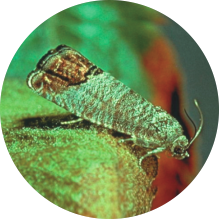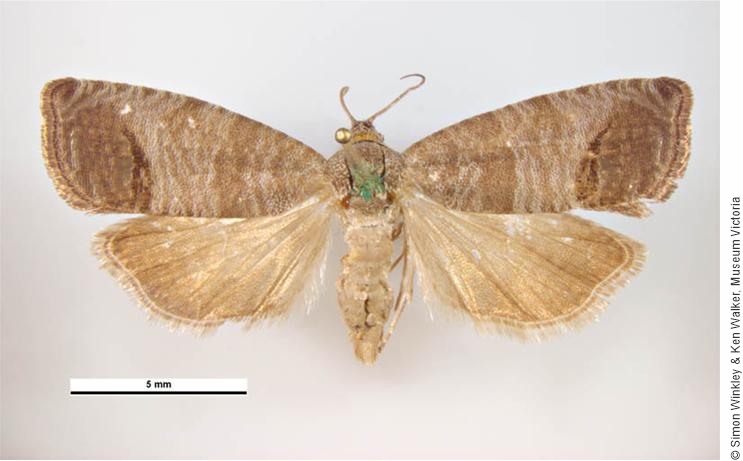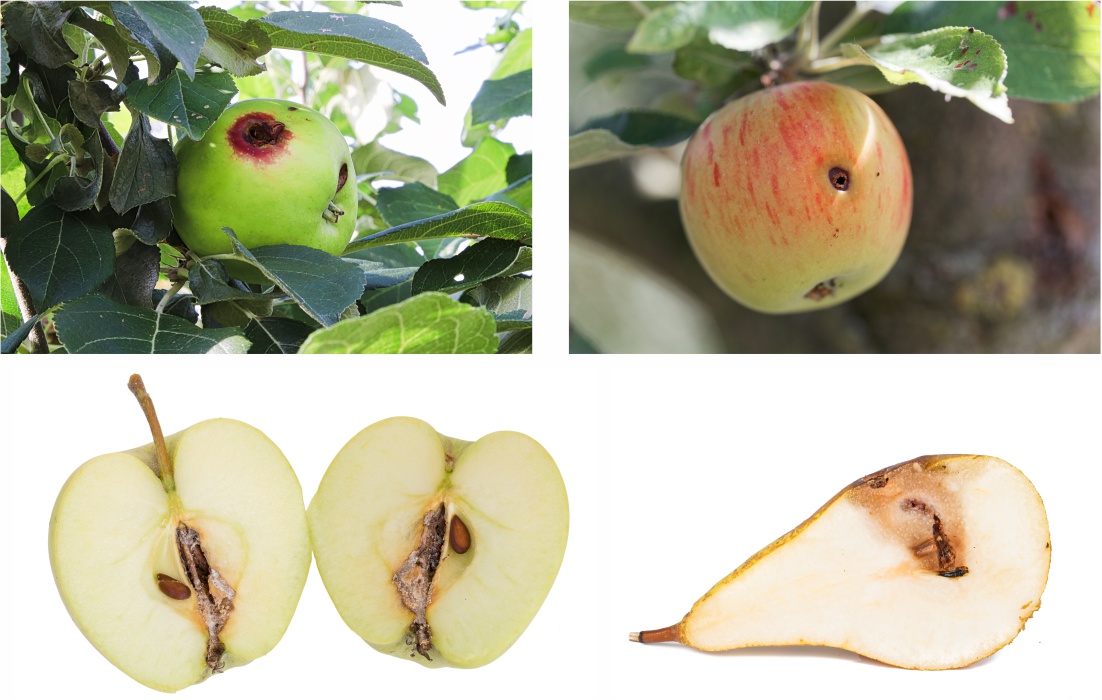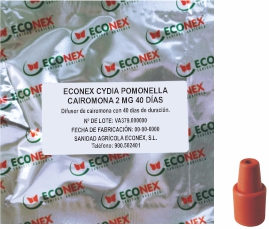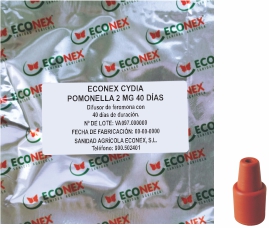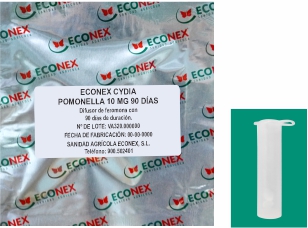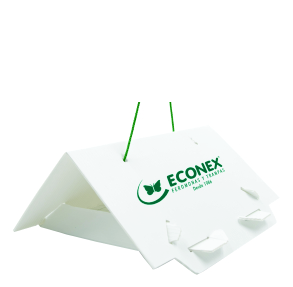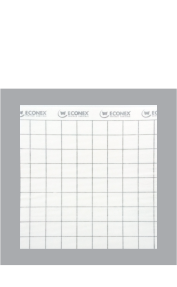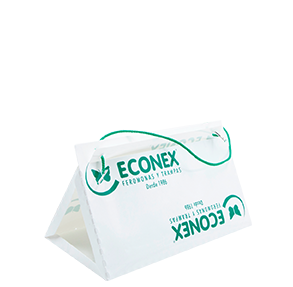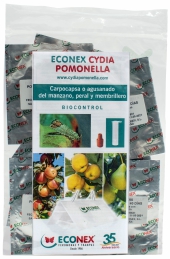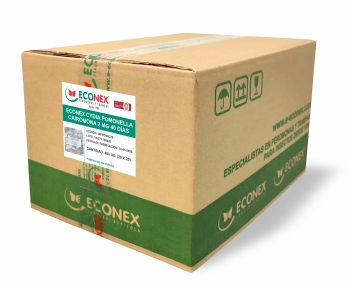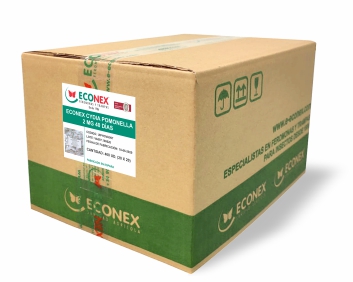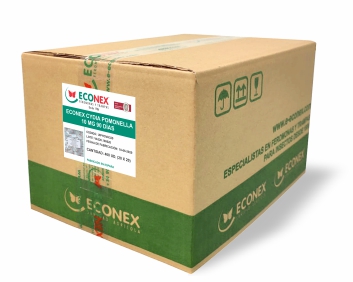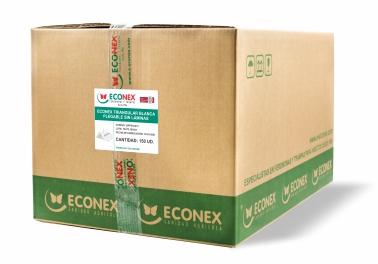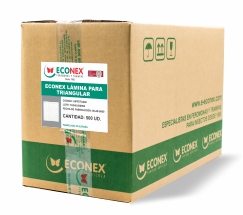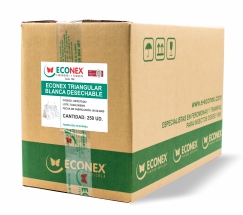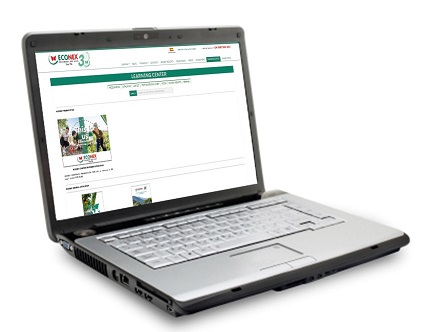It is a pest of Palearctic origin that is currently distributed throughout the world and mainly causes damage to pip-fruit trees. It produces caterpillars in the fruit and is one of the most serious pests of pip-fruit crops.
Morphology and biology
The adult’s wingspan can reach up to 20 mm in size. The forewings are greyish and in which a darker spot stands out in its distal area, bordered by a brighter area with golden tones, resembling a parenthesis.
The eggs are oviposited lengthwise on a branch or fruit and measure about 1 mm in size. They are circular, flat and white at the beginning. Later, they develop a characteristic red ring and before hatching the black head of the caterpillar can be seen.
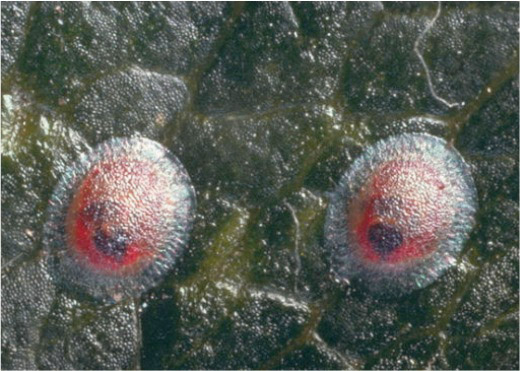
Eggs laid by Cydia pomonella
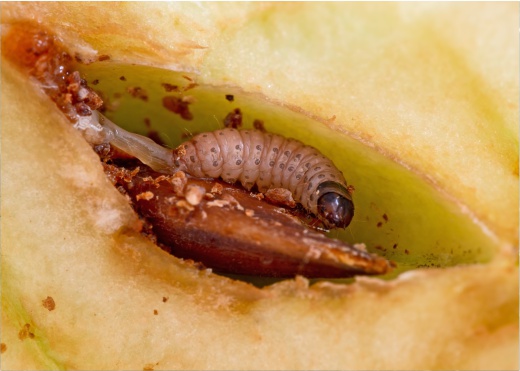
Caterpillar Cydia pomonella
The caterpillar grows to 20 mm in size and goes through 5 larval stages. Initially it is white with a black head, which later changes to a pinkish colour with a brown-black head. It may have a more reddish colour during the summer in stone fruits.
Carpocapse caterpillars differ from other carpophagous tortricids, in that they do not have an anal comb.The chrysalis is brown with a double row of spikes on its abdominal segments.
The insect overwinters in the form of a fully developed larva inside a very resistant silk cocoon that is found under the bark of tree trunks and main branches. It can also be found in warehouses, inside bags or drawers, or on the ground. The insect begins its development at the end of Winter and pupates at the start of Spring in March or April.
The adults appear from May to June, although in warmer years they already fly in April.
It is characterised by having a very staggered emergence of adults, so that every year all generations are overlapped. The adults fly at night and are only active at temperatures above 15oC.
In warm areas it has 2 to 3 generations a year, but the last generation may be only partial. One phenomenon they show is of optional diapause, meaning that a percentage of individuals from each generation enter diapause and their development is frozen until the following year.
The entry into diapause of the final generation of caterpillars depends on the photoperiod, temperature and maturity of the fruit.
Each female oviposits 20 to 60 eggs, they are mainly found on leaves, although they can also be found on fruits or buds.
After a few days the larvae hatch and move towards the fruit, where they start to feed on the peel and make a superficial erosion. Later, they perforate the fruit directly towards the core to feed on the pips.They then abandon the fruit to pupate on the trunk or on a branch.
Damage
As soon as the eggs hatch, the larvae head towards the fruit. Then, they bite into the peel which could last for 1 to 2 days. Afterwards, they penetrate the pulp towards the core, to get to the pips.
They excrete the remains in the form of reddish sawdust through the entrance hole.
In the case of attacks on flowers, the larvae feed on the anthers and pistils inside. They then move on to other flowers and join the entire damaged area together with silk threads, forming masses inside in which there are dry petals and large amounts of dark coloured excrements.
This damage can be confused with that of Cacoecia, the difference being that this last pest attacks with a preference for freshly grown fruits and not flowers. Also, Cacoecia does not produce sawdust and excrements.
Superficial erosions of the peel cause a depreciation of the fruit just by their appearance alone, although it often happens that some larvae do not manage to enter the fruit and subsequently, they die.
If the caterpillar enters the fruit, it can fall prematurely, especially during the first and second generation. In any case, it is not fit for consumption. The loss of crops can be very significant, it could even be a total loss.
